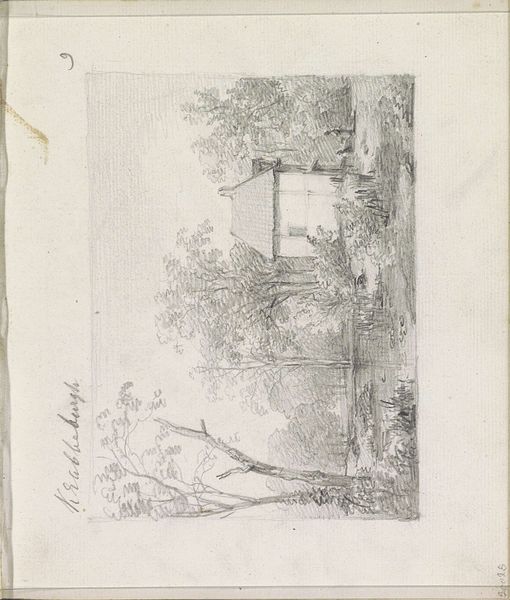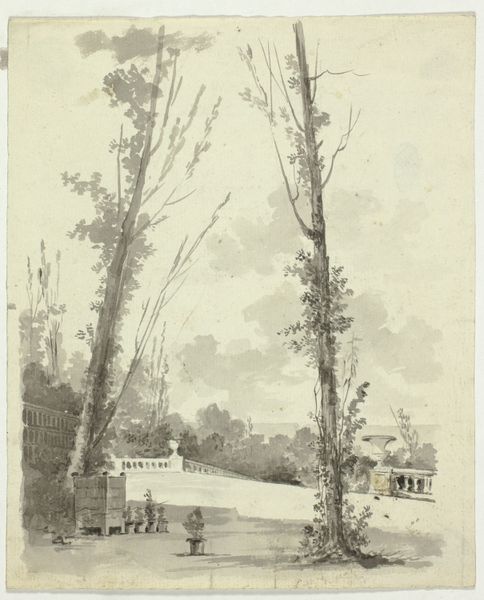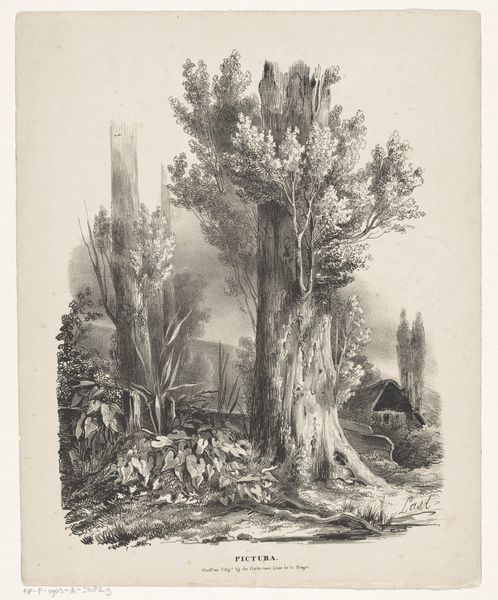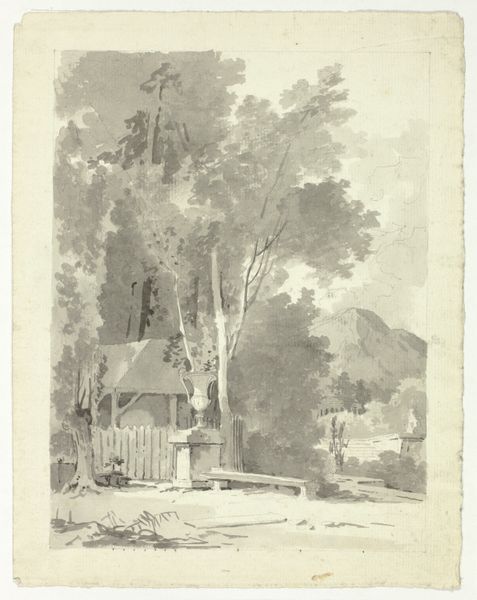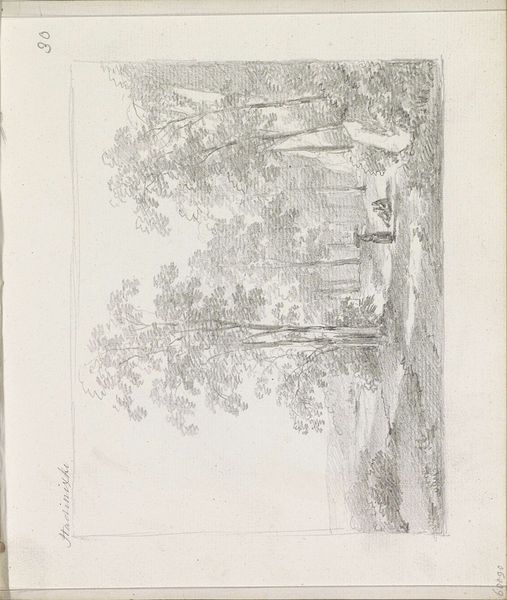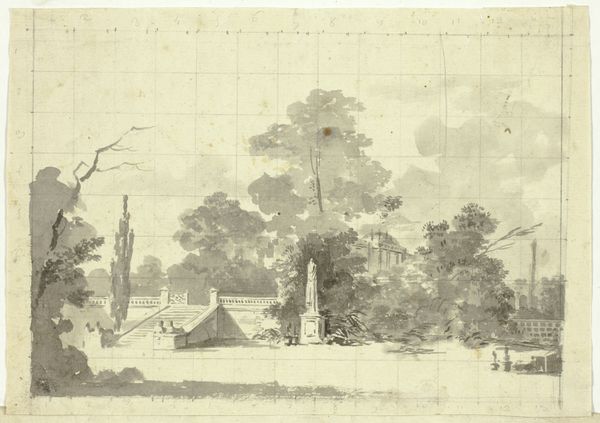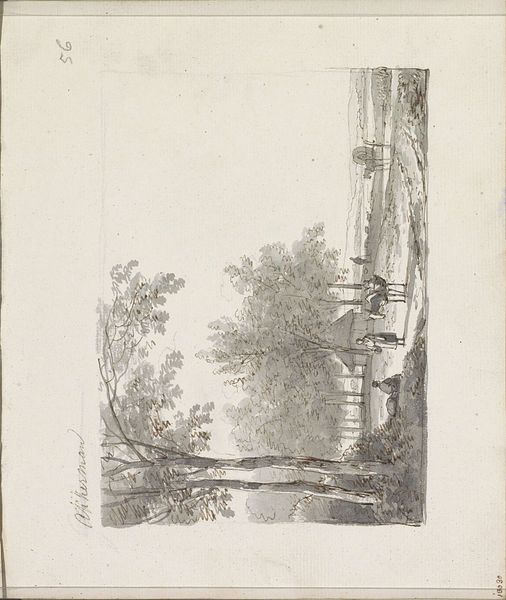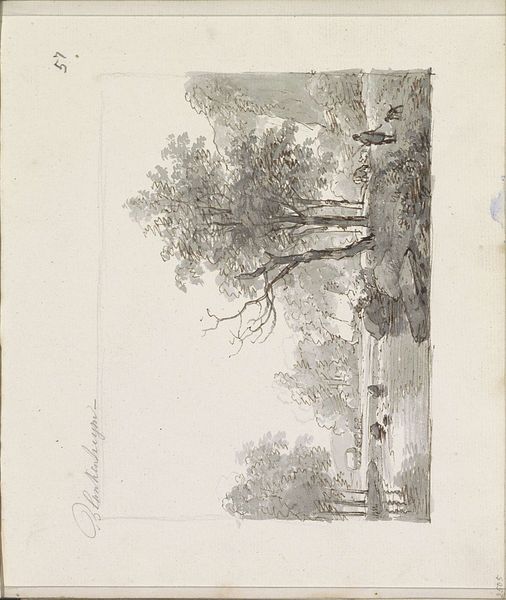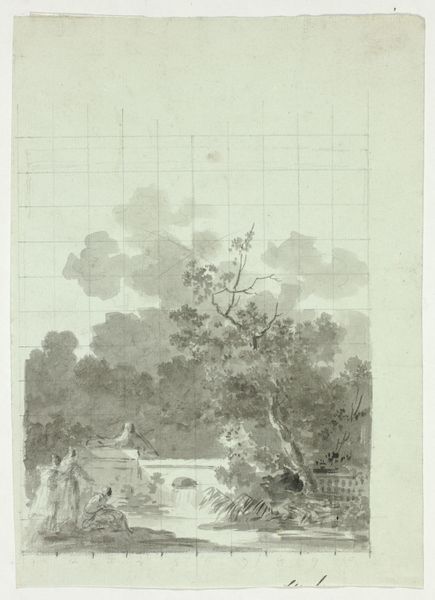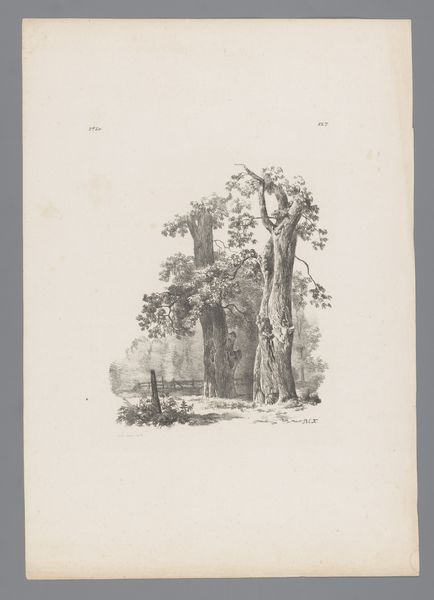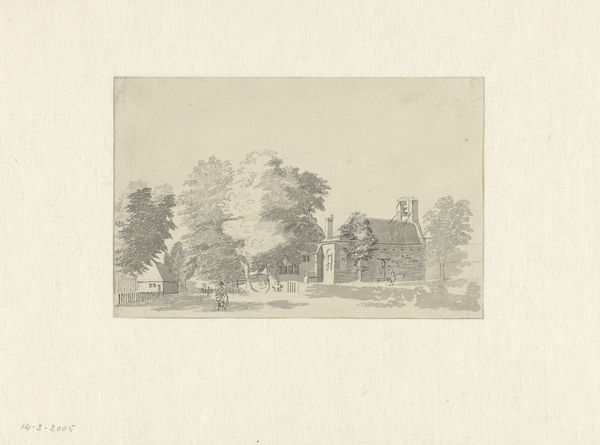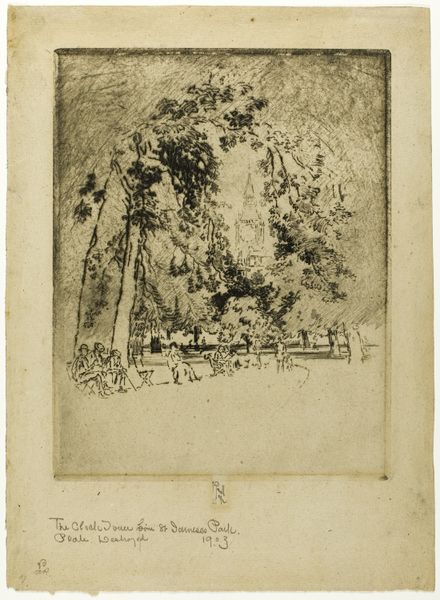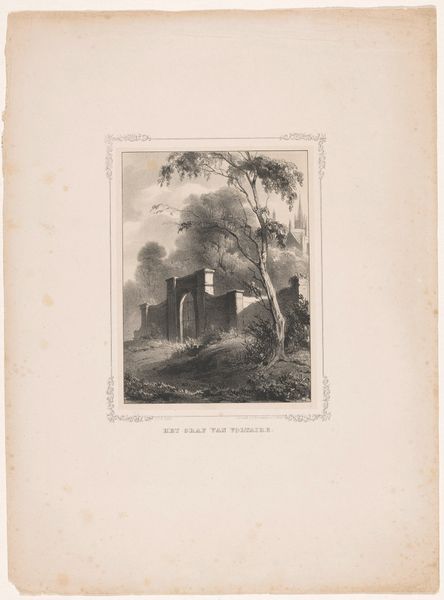
View of the Park at Versailles: Two Figures on a Bench in a Clearing, Female Statue Nearby n.d.
0:00
0:00
drawing, print, paper, watercolor, ink, chalk, graphite
#
drawing
# print
#
landscape
#
classical-realism
#
paper
#
watercolor
#
ink
#
chalk
#
graphite
#
watercolour illustration
#
academic-art
Dimensions: 247 × 194 mm
Copyright: Public Domain
Editor: This is Antoine Pierre Mongin’s "View of the Park at Versailles: Two Figures on a Bench in a Clearing, Female Statue Nearby," date unknown. It's a chalk, graphite, ink and watercolor drawing on paper. It strikes me as rather serene and… melancholy? What do you see in this piece? Curator: Beyond the immediate impression of serenity, I see a reflection of societal hierarchies and power dynamics embedded within the landscape itself. Versailles wasn't simply a park; it was a stage for displaying royal authority and controlling nature, wasn’t it? The manicured landscape embodies control over the natural world. Editor: I hadn't considered the control aspect so overtly. The figures on the bench, though, seem like passive observers within that controlled space. Curator: Exactly! Consider their positioning in relation to the statue. Is the statue an idealized vision of femininity imposed upon the space and upon the figures within the painting, embodying patriarchal expectations? It invites us to consider whose stories are being told and whose are being erased in these grand narratives. Editor: So, it is also questioning the idea of an idealized vision, presenting us an intentionally political view of Versailles? Curator: Precisely. Even the choice of medium – the subtlety of watercolor, ink, chalk and graphite – could be interpreted as a commentary on the fragile nature of power and the subtle ways in which it is maintained. What do you make of that? Editor: That’s a really interesting point! It pushes us to think critically about the intended purpose and also the effects of such places on everyday interactions, challenging our own assumptions. I didn't really think about the techniques contributing to this interpretation of social critique and disruption. Curator: I agree. It’s in questioning the construction of places such as Versailles that we begin to recognize power structures and cultural contexts from the past as well as our own time.
Comments
No comments
Be the first to comment and join the conversation on the ultimate creative platform.
